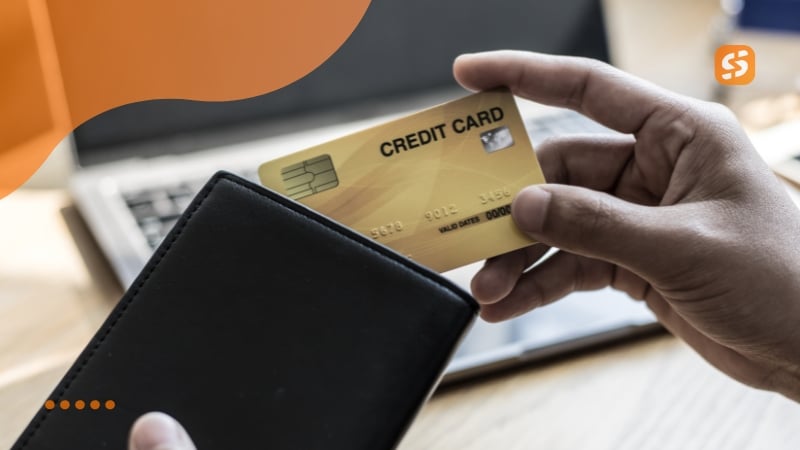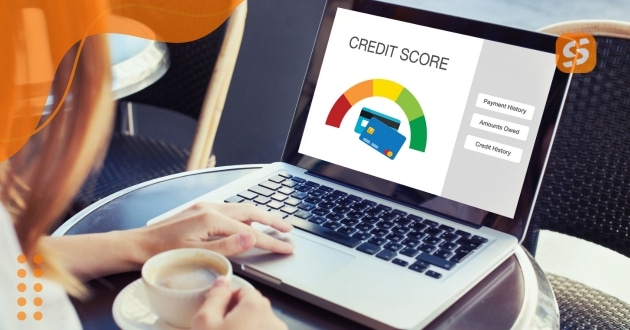Advertisements
Credit card for bad credit might sound like an impossible dream, but in reality, it is a practical solution for millions of people trying to regain financial stability. Whether you have struggled with overdue bills, unexpected medical expenses, or simply made mistakes in the past, your credit score does not have to define your future.
These cards are designed not only to provide purchasing power but also to serve as a stepping stone toward healthier financial habits. In today’s fast-paced world, living without a credit card can feel limiting. Many essential services, like booking a hotel room, renting a car, or even subscribing to online platforms, often require one.
When your score is low, being denied repeatedly can be frustrating, and that frustration sometimes leads to giving up. However, applying for a credit card for bad credit is not about settling for less; instead, it is about starting over with tools tailored to your situation. With patience and responsibility, these cards open the door to opportunities you thought were out of reach.
Advertisements
Moreover, choosing the right product can transform how you manage your finances. With transparent fees, clear reporting to credit bureaus, and gradual improvements in your credit history, these cards act as a bridge between past challenges and future successes.
By the end of this guide, you will not only understand what makes a credit card for bad credit effective but also feel empowered to make a choice that aligns with your goals.
Understanding Bad Credit and Its Impact
When discussing financial health, the phrase “bad credit” often carries a heavy weight. It represents more than just a number on a report; it reflects your history of borrowing, repaying, and managing responsibilities.
To put it simply, bad credit signals to lenders that lending to you might be risky. This is why understanding how it develops and how it impacts your daily life is fundamental before choosing a credit card for bad credit.
Advertisements
First of all, credit scores are built using several factors. Payment history, amounts owed, length of credit history, new inquiries, and types of credit all play a role. Missing payments or using most of your available credit can quickly drag your score down.
Consequently, a score below 580 is typically labeled as “poor,” and this classification can limit your access to loans, mortgages, or even basic credit cards. In other words, your past mistakes or financial struggles directly influence the financial opportunities available today.
Furthermore, the impact of bad credit extends beyond simple borrowing. For example, landlords often review credit reports before approving rental applications, and some employers even conduct credit checks during hiring processes.
This means that poor credit can affect not only your finances but also your housing and career prospects. Therefore, repairing your credit is not merely about numbers; it is about rebuilding trust and opening doors to essential aspects of life.
However, it is important to emphasize that having bad credit does not mean you are out of options. A credit card for bad credit is designed to give you a second chance. By making small purchases, paying on time, and staying disciplined, you can demonstrate reliability and gradually improve your score.
As a result, this progress can unlock access to better financial products, such as the Best credit cards USA 2025, which typically offer higher limits, lower fees, and valuable rewards.
Types of Credit Cards for Bad Credit
When searching for a credit card for bad credit, you will encounter two main categories: secured and unsecured cards. Understanding the difference between them is crucial.

1 – Secured Credit Cards
Secured cards require a refundable security deposit. For instance, if you deposit $300, your credit limit will usually be the same amount. This deposit reduces risk for the lender and makes approval easier, even if your credit is damaged.
Because payments are reported to credit bureaus, responsible use of a secured card, like paying on time and keeping balances low, can significantly improve your credit over time. Eventually, many issuers allow you to upgrade to an unsecured card once your score improves.
2 – Unsecured Credit Cards
Unsecured cards do not require a deposit, but they are harder to get with bad credit. Often, they come with high interest rates, annual fees, or limited benefits. Nevertheless, they can still serve as a stepping stone if managed responsibly.
Therefore, while unsecured cards may seem more appealing, secured cards usually provide a safer and more affordable entry point for rebuilding credit.
Key Features to Look For
Not all credit cards are created equal. When comparing options, consider the following factors carefully.
- Annual Fees: Some credit card for bad credit options charge steep annual fees, while others do not. If you are just starting to rebuild your score, keeping costs low is essential. Always weigh the benefits against the fees.
- Interest Rates: High interest rates are common with bad credit cards. However, interest only matters if you carry a balance. By paying in full each month, you can avoid interest entirely and use the card strictly as a credit-building tool.
- Reporting to Credit Bureaus: To rebuild credit effectively, your card must report to all three major credit bureaus (Experian, Equifax, and TransUnion). If it does not, your responsible behavior may go unnoticed, slowing down your progress.
- Upgrade Path: The best cards for bad credit provide a pathway to better products. For example, some issuers automatically review your account and may increase your limit or switch you to an unsecured card once you demonstrate good habits.
Benefits of Using a Credit Card for Bad Credit
Although limitations exist, there are several advantages to having a credit card for bad credit.
- Credit Building: Each on-time payment boosts your credit history. Over time, these positive records outweigh the negatives.
- Emergency Access: Even with low limits, a credit card can provide vital access to funds in emergencies when cash is not available.
- Security: Unlike prepaid cards or debit cards, credit cards usually offer fraud protection, making them safer for online or travel use.
- Financial Discipline: Having a structured repayment cycle encourages budgeting and financial awareness.
Common Mistakes to Avoid
Transitioning from bad credit to good credit requires avoiding pitfalls. Here are the mistakes that hold people back:
- Carrying High Balances: Maxing out your card raises your credit utilization ratio, which negatively impacts your score. Aim to use less than 30% of your limit.
- Missing Payments: Even a single late payment can undo months of progress. Set up reminders or automatic payments.
- Applying for Multiple Cards: Each application generates a hard inquiry, which temporarily lowers your score. Choose one card and stick with it until your credit improves.
By being aware of these mistakes, you can stay focused on rebuilding your credit steadily.
Strategies for Maximizing Success
Using a credit card for bad credit is only effective if you have a plan. These strategies will help you make the most of your opportunity.
- Pay On Time, Every Time: This single habit is the strongest driver of credit improvement. Even if you only pay the minimum, never miss the due date.
- Keep Balances Low: As mentioned earlier, low utilization demonstrates responsible behavior. Ideally, pay off your balance in full each month to avoid interest.
- Monitor Your Credit: Use free tools or your card issuer’s credit score monitoring service to track progress. Monitoring helps you celebrate small wins and spot errors that might harm your score.
- Gradually Increase Limits: Once your credit improves, ask your issuer for a limit increase. A higher limit lowers your utilization ratio, further boosting your score.
Alternatives to Credit Cards
While a credit card for bad credit is a powerful tool, it is not the only option. Alternatives include:
- Credit Builder Loans: Offered by some credit unions, these loans hold money in an account until you finish paying. Your timely payments are reported to the credit bureaus.
- Authorized User Status: Being added to a family member’s account with good credit can positively affect your score.
- Secured Loans: Like secured cards, they require collateral, but they can diversify your credit profile.
Exploring these alternatives alongside a credit card creates a stronger overall strategy for recovery.
Real-Life Example: Maria’s Journey
To illustrate, consider Maria, who had a credit score of 510 after medical bills went unpaid. She applied for a secured credit card for bad credit with a $300 deposit. By charging small amounts, like groceries, and paying in full each month, her score rose to 640 in 18 months.
Eventually, her bank upgraded her to an unsecured card, and she qualified for better financial products. Maria’s story demonstrates that discipline and consistency, not income level, are the real keys to success.
Conclusion
Choosing a credit card for bad credit is not simply about accessing a piece of plastic; it is about reclaiming control over your financial future. While it is true that these cards often come with higher fees and stricter terms, they are intentionally designed to give you a pathway back into the financial system.
Moreover, the real value of a credit card for bad credit lies in the habits it encourages. Each on-time payment, each balance kept under control, and each responsible use is a signal to lenders that you are capable of managing credit wisely.
Step by step, these positive behaviors begin to outweigh past mistakes, and slowly, your score begins to rise. This is not an overnight transformation, but rather a gradual rebuilding of trust, both with financial institutions and with yourself.
It is also worth noting that financial recovery requires more than just the right credit card. Complementary strategies, such as reviewing your credit report regularly, disputing inaccuracies, and creating a realistic budget, can significantly accelerate your progress.
Eventually, the persistence pays off. What begins with a secured or entry-level card can lead to better opportunities, such as travel rewards, cashback benefits, and even premium products like the Best credit cards USA 2025.
This progression demonstrates that bad credit is not permanent. With the right approach, you can evolve from rebuilding to thriving, gaining access to products that truly match your lifestyle and goals. For trustworthy and updated information on credit, debt management, and consumer rights, you can visit the official website of the Federal Trade Commission (FTC). This government resource provides guidance, tools, and protections designed to support individuals navigating financial challenges.



















